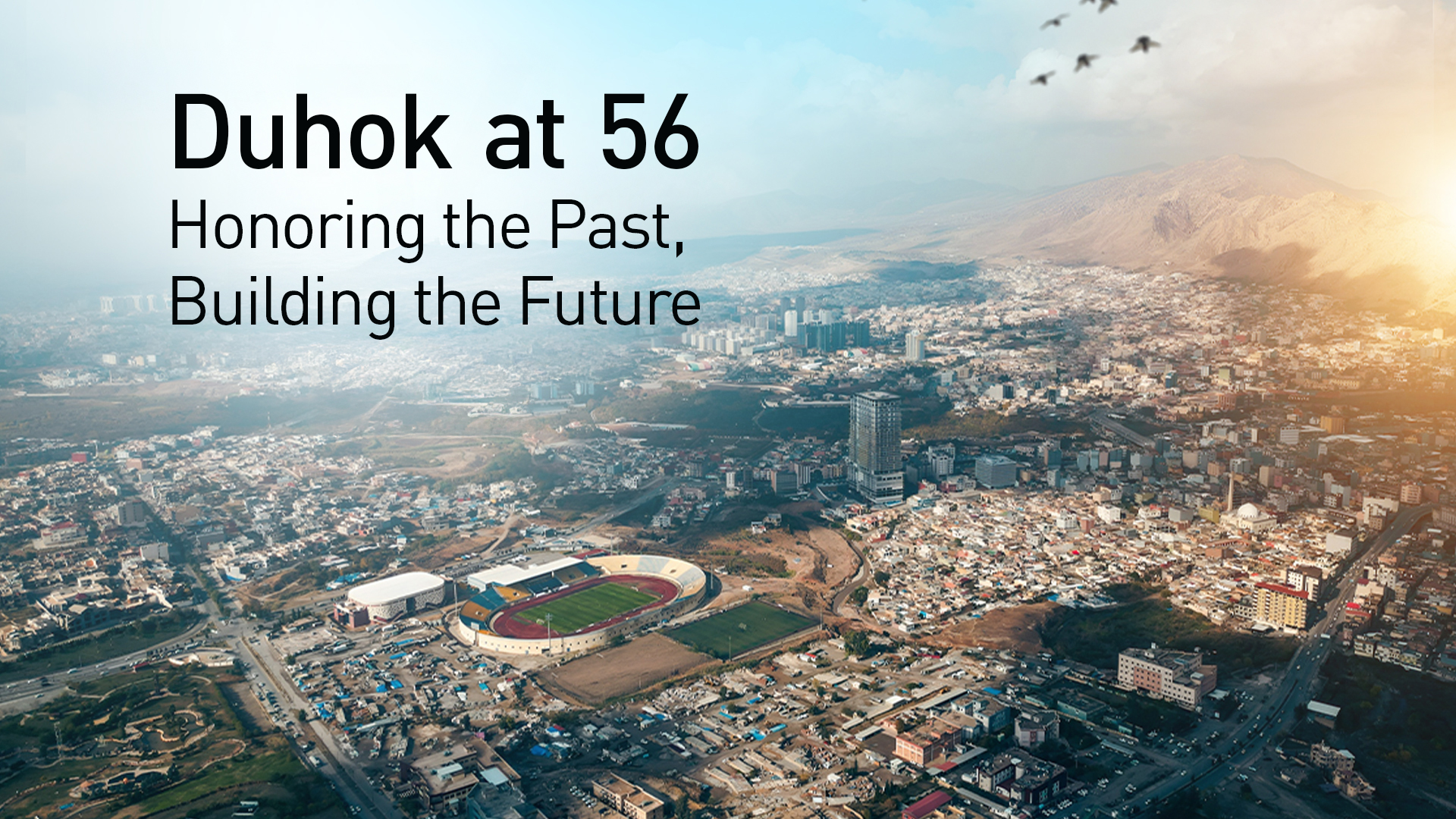Duhok at 56: A Province Transformed by Vision and Development
Today, after more than three decades under the administration of the Kurdistan Regional Government (KRG), Duhok has undergone a comprehensive metamorphosis — emerging as a hub of institutional strength, infrastructure, and peaceful coexistence.

By Kamaran Aziz
ERBIL (Kurdistan24) – Fifty-six years ago, on May 27, 1969, a landmark decree elevated Duhok from a district within Nineveh Province to a province in its own right — a transformative step credited to the unwavering efforts of the late Kurdish leader Mullah Mustafa Barzani. At the time, the Kurdistan Region was mired in systemic state neglect, but Barzani’s political and diplomatic determination helped lay the foundation for Duhok’s new administrative status.
Today, after more than three decades under the administration of the Kurdistan Regional Government (KRG), Duhok has undergone a comprehensive metamorphosis — emerging as a hub of institutional strength, infrastructure, and peaceful coexistence.
Veterans Reflect on the Transformation
Veteran Peshmerga fighter Abdulrazzaq Karmavi, who has lived through the city’s decades of change, told Kurdistan24: “Even the villages no longer have mud houses. Everyone now lives in modern homes, thanks to the continuous support from the KRG. Duhok today is incomparable to how it was before 1968.”
An Urban and Educational Renaissance
Duhok’s transformation is substantiated by official statistics that speak to a deep-rooted urban, educational, and health-driven revival:
- 7 universities and 70 educational institutes
- 1,500 schools across all levels
- 13 hospitals and 14 health centers
- Over 900 tourism and travel agencies
- Approximately 2,700 residential complexes and housing units
Majid Sayed Saleh, Assistant Director General of Planning and Construction in Duhok, highlighted the infrastructural advances: “Most roads have become dual carriageways, and even village alleys are now paved like those in the city center.”
A Clean and Peaceful Model of Coexistence
Duhok is now regarded as one of Iraq’s cleanest and most serene provinces, a distinction celebrated by its residents. Rikar Bisfki noted the emphasis on public spaces: “The attention to public parks and gardens has played a major role in improving quality of life.”
Hasan Ali added: “The increasing focus on greenery is a vital development we hadn’t seen before.”
Duhok’s Contemporary Profile
Spanning an area of 10,927 km², Duhok includes 6 districts and 22 sub-districts. It is widely viewed as a model for balanced reconstruction, environmental awareness, and multiethnic harmony. The KRG’s commitment to equitable development has ensured that progress reaches all corners of the province, from urban centers to rural villages, with no signs of favoritism.
What began as a political milestone in 1969 has, through consistent governance and public investment, evolved into a success story emblematic of the broader Kurdish aspiration for dignity, development, and coexistence.
Report by: Bewar Helmi – Kurdistan24 – Duhok
